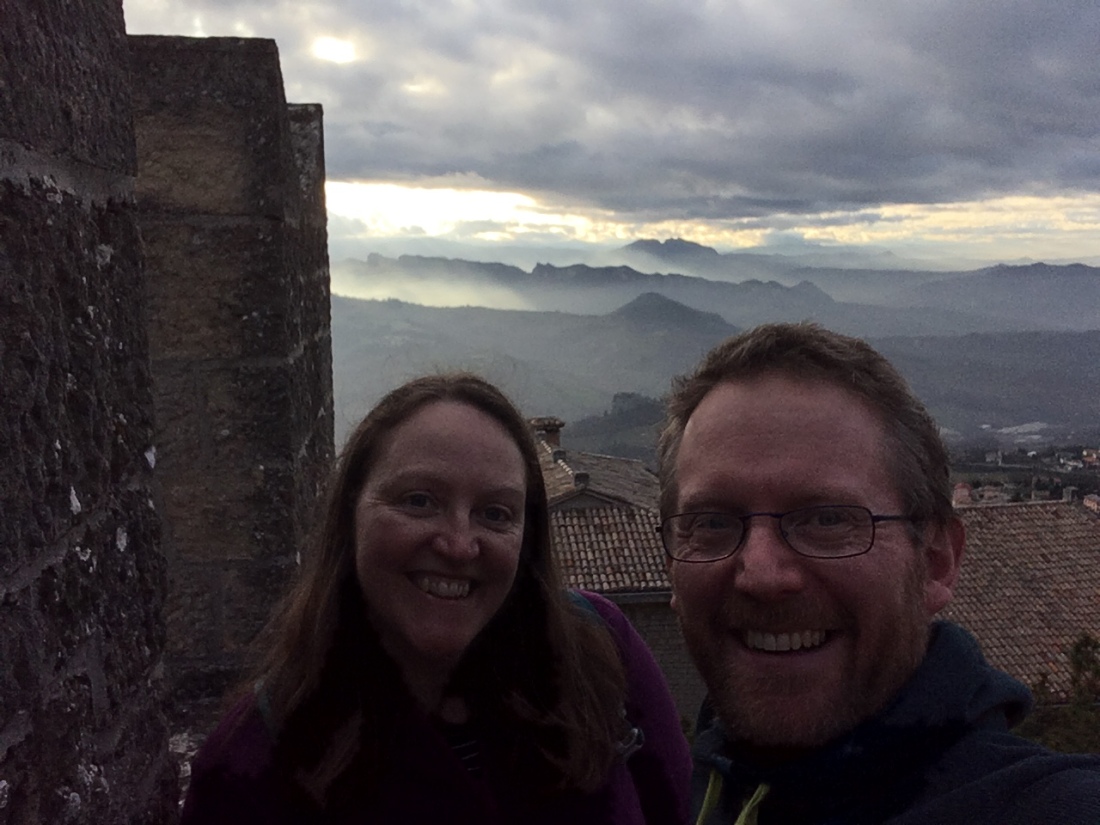
Way back in the distant before times of the start of February, we took the unusual decision to head south for the weekend, away from the mountains. We pointed the car in the direction of San Marino, a fairly long drive, nearly 4 hours. Emerging from our mountain enclave, we sped past Verona and across the vast plains of the river Po. Approaching Bologna, the outline of the Apennine mountains began to fill the view out of the passenger side window whilst through the windscreen, the motorway continued in a dead straight line all the way to the coast at Rimini. We hadn’t come for the seaside beach though (that can wait until tomorrow), so we swung inland. The ground became increasingly three-dimensional, its corrugations rising gradually higher as we approached the San Marino border, marked by a rather naff bridge and sign. There were few immediate signs of being in a new country other than the pedestrian crossings painted in the national blue-and-white colours and the fact that petrol was noticeably cheaper.
San Marino owes its centuries of independence almost entirely to the remarkable Monte Titano, a fearsome escarpment which is steep on one side and even steeper on the other. It provided an almost impregnable defensive position which was so daunting that any passing armies, of which there were many in Mediaeval Italy, would not even bother trying to invade.
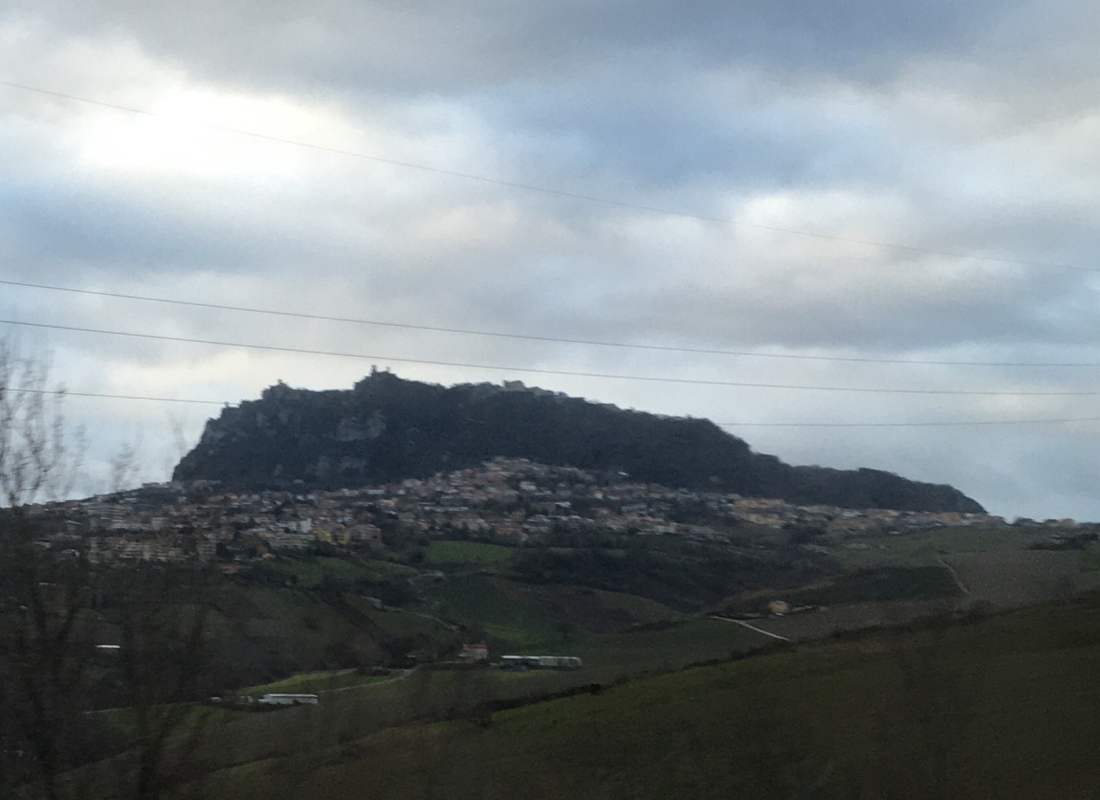
The mountain top is said to have first been settled by a monk who, by remarkable coincidence, was called Saint Marinus. For several centuries, the little community of San Marino was largely left alone on its rocky redoubt. In the 1400s, a few neighbouring villages decided they would throw their lot in with San Marino, creating the borders which have remained unchanged since. As surrounding empires rose and crumbled, San Marino continued to be left in splendid isolation, even managing to be undisturbed by Napoleon’s rampage across northern Italy. Indeed, L’Empereur even offered to extend San Marino’s lands down to the coast but the Republic’s leaders politely declined, no doubt worried about jeopardising their long-held independence.
As Italy was slowly knitted together into a single nation state, the San Marino government requested to be left out. This request was more favourably received after the Republic gave shelter to Garibaldi and his army on their way to Austrian-held Venice. Since then, San Marino has largely maintained its neutrality through two world wars, although the British bombed it by mistake in 1944. Of course, being such a tiny country with only 30-odd thousand inhabitants, it is very closely linked to Italy. Even though San Marino isn’t part of the EU, it still uses the Euro and is effectively subject to EU law through its ties with Italy.
As we rounded another sweeping uphill curve on the main road through the tiny country we were at last presented with our first sight of Monte Titano, rearing up almost vertically above us. These days, it is more easily ascended, either by the road which snakes up around the far side, or the cable car that does the job in about three minutes.

The old town of San Marino lies on the ‘inland’ or western flank of Monte Titano, arranged in a series of terraced levels that reach almost all the way to the summit. Surprisingly, the buildings bring Leeds and Bradford to mind, built as they are from something closely resembling Yorkshire Stone.

Clearly, the old town has been extensively renovated in recent years and it looks fantastic, with narrow lanes suddenly giving way to wide piazze backed by grand municipal buildings or the spellbinding views of the Apennines across the border. The view inland is really something else, particularly during the time we were there as the light filtered through the clouds to highlight the rolling green hills which rise up to the larger mountains on the horizon. Cloud and mist lingered in some of the valleys, adding to the almost pre-historic appearance of the landscape.
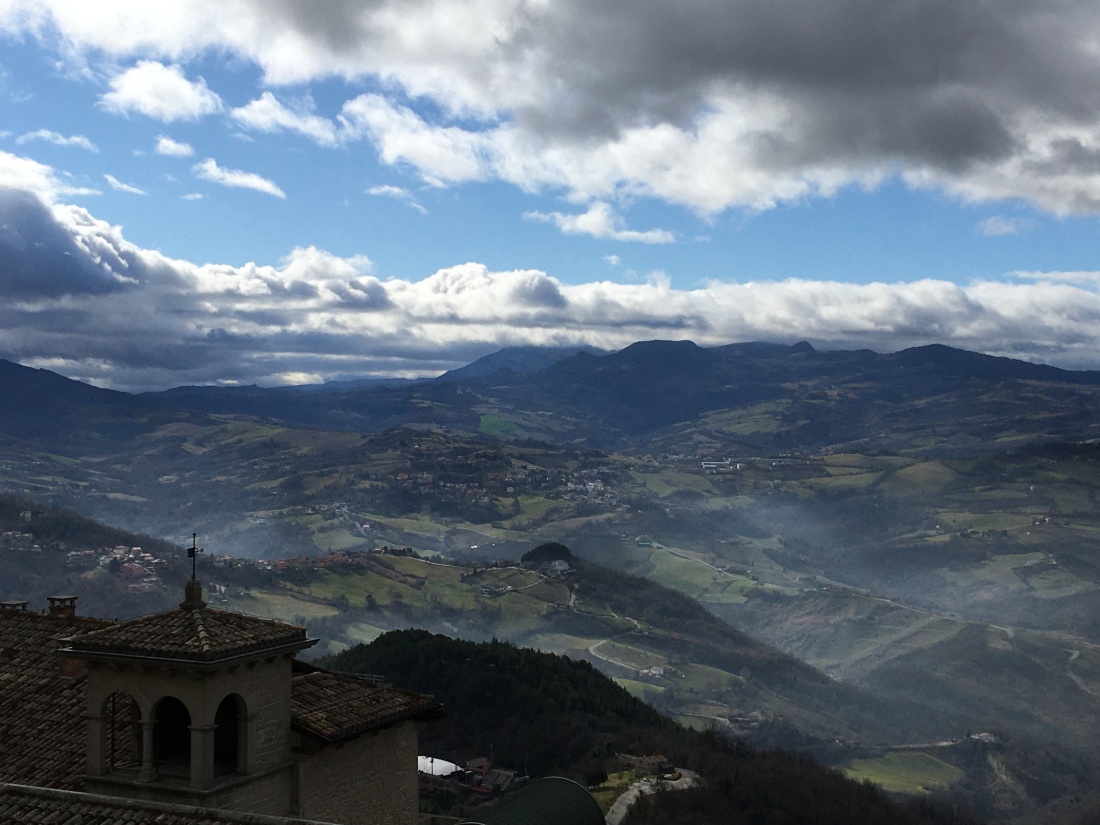
The view in the other direction is supposed to be just as impressive with views on a good day of Rimini and the Adriatic and, on a really good day, even Croatia in the far distance. However, we were treated to a hazy day when the view in that direction barely extended beyond the border with Italy.

After finding our hotel, hidden away at the top end of town, we set off for a walk in the weak afternoon sun. Our first destination was one of the three forts which line the ridge, built to further discourage anyone from evening thinking about attacking. Still largely intact, they punctuate the skyline beautifully, impressive from up here and down below.
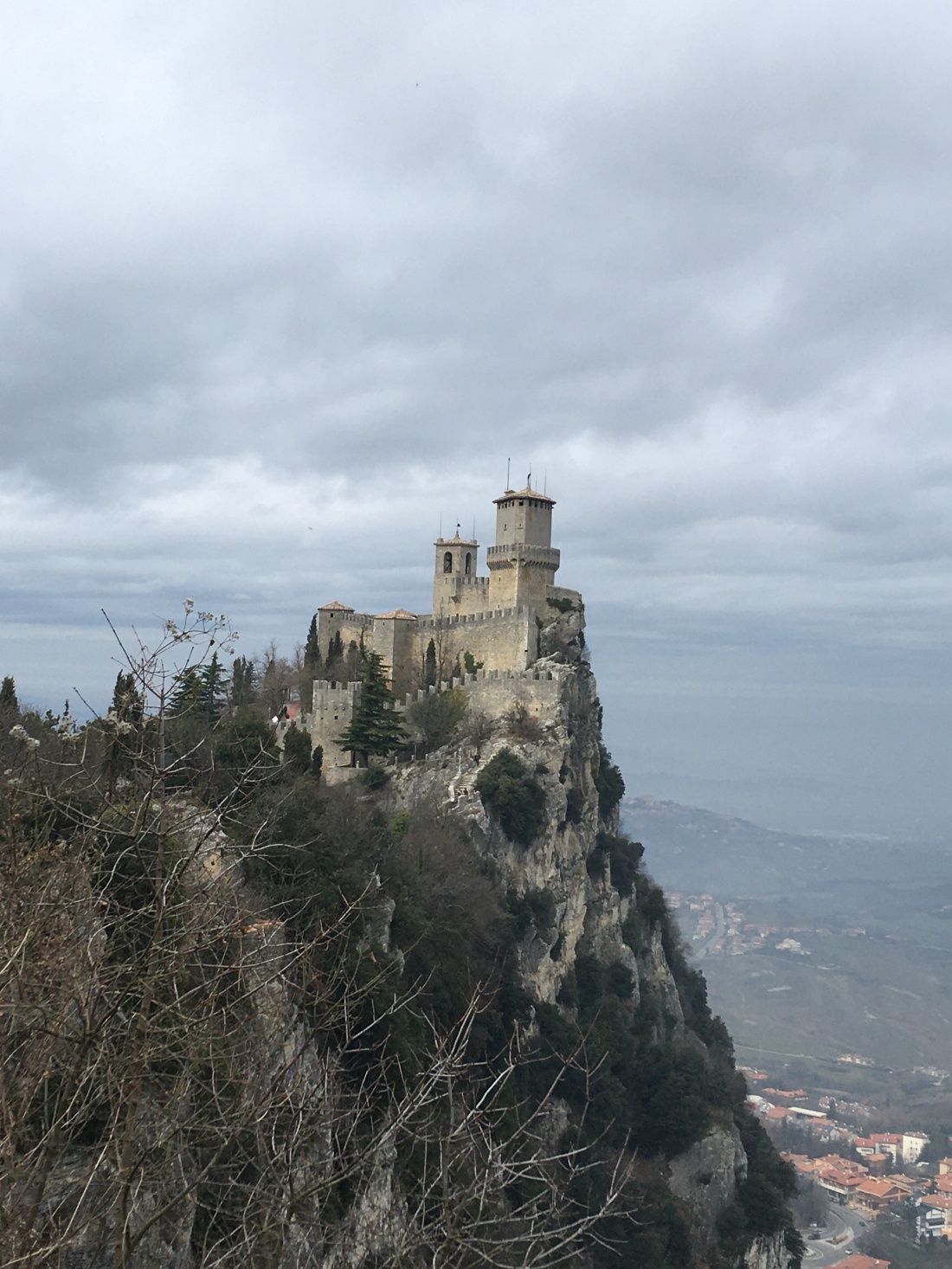
A clear path lead along the ridge to the final tower, at which point we saw a footpath sign labelled “Sentiero della Rupe” or “The Cliff Footpath”. Sounds fun.
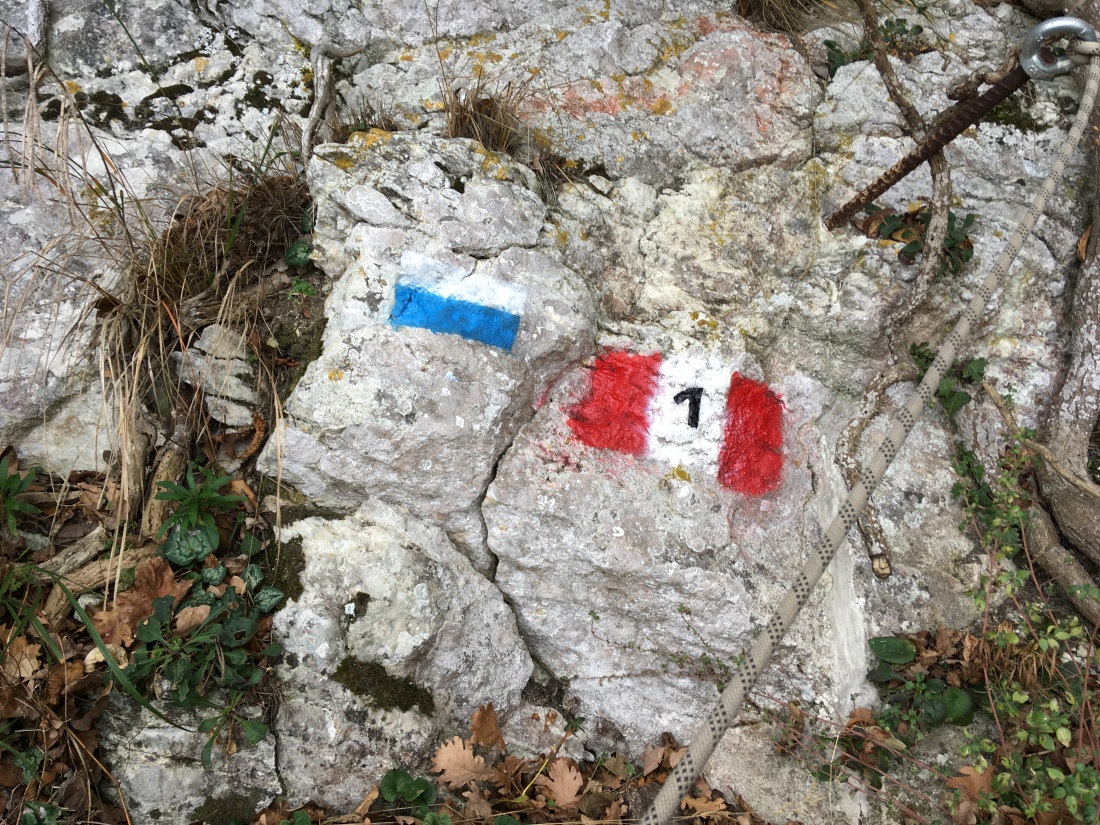
So we headed off and within minutes we were on a proper mountain path, with fixed ropes and cables provided to help negotiate the trickier parts and wooden walkways provided where there simply wasn’t any room for a normal footpath. What a find! An hour or so later, we emerged at the foot mountain, having had a close-up view of exactly how rugged Monte Titano is.
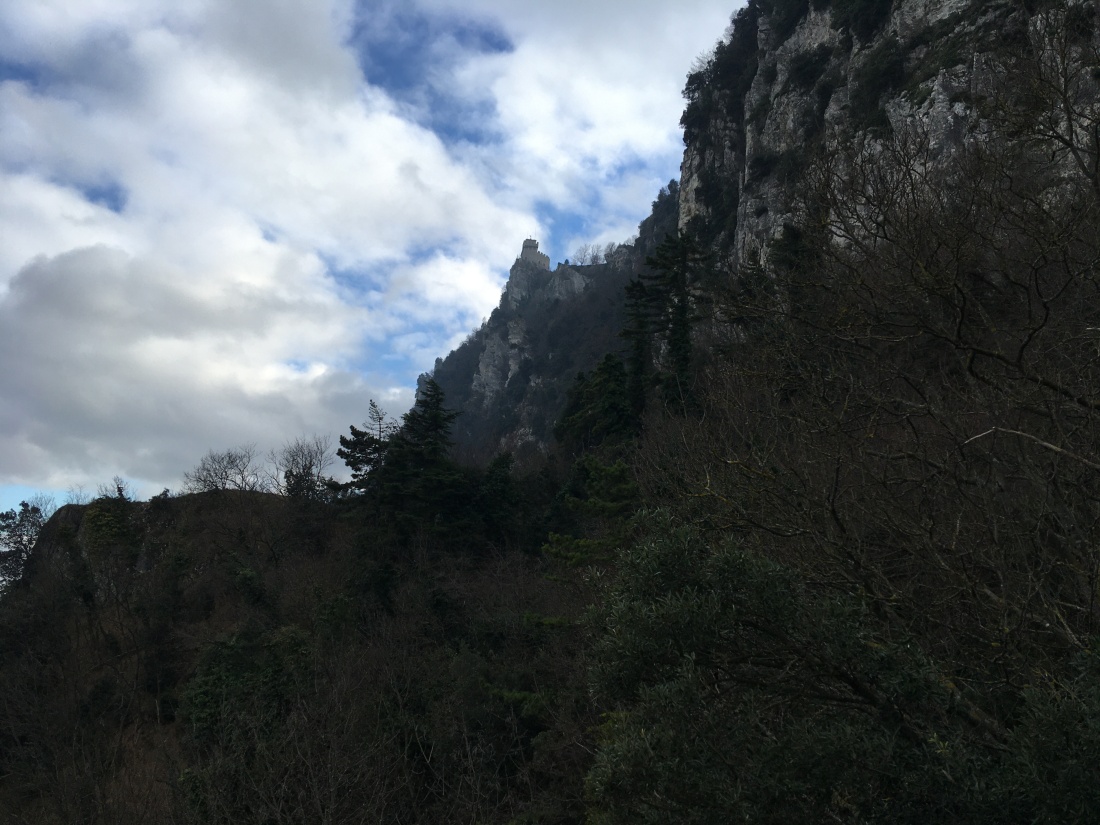
We let the cable car take the strain on the way back uphill, saving our energy to continue wandering around the old town. A large part of the city walls is still standing and several sections are publicly accessible, affording new vantage points over this funny little land. As night fell, we retreated to a charming little bar for an apératif or several and after dinner we found a very friendly place that served a truly outstanding drop of grappa.
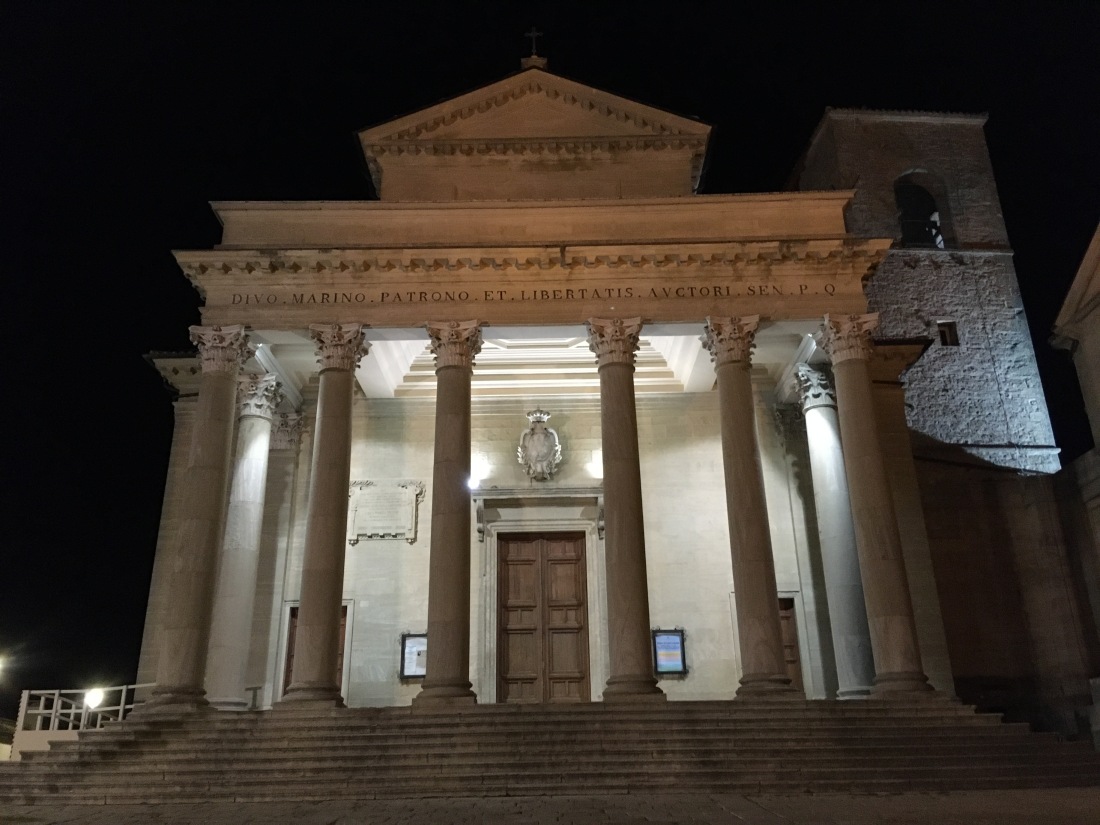
That grappa seemed a slightly less wise choice the next morning as we got up early to drive back down to Rimini for the weekly parkrun. As with all of the Italian parkruns we have visited, Rimini’s was small but perfectly formed, 3 laps of a flat course in a park close to the historic centre of the town. Indeed, Rimini had a lot more history to offer than I expected; like many Italians, I only knew of it as a huge, sprawling seaside resort, part of an unbroken 40 km long sprawl of wide sandy beaches filled with neat rows of sunbeds and umbrellas. In the summer holidays, this is where Italy comes to wind down in the daytime and party at night. Fortunately for a grumpy old git like me, the beaches are empty in the winter, largely the preserve of fellow dog walkers.

Walking across the sand, it felt a little like Cleethorpes, although the waters of the Adriatic are not as brown as those of the Humber and the hotels behind the beaches are a lot bigger. It was great to be on a beach again, we so rarely get the chance to visit the coast from Trento, but I couldn’t imagine spending any time here in the summer. With the crowds and the heat of the Mediterranean sun, it would not be my choice. Each to their own though, a few weeks “al mare” remain a staple of Italian family life, with many people having a season ticket for their own personal pitch on the sand.
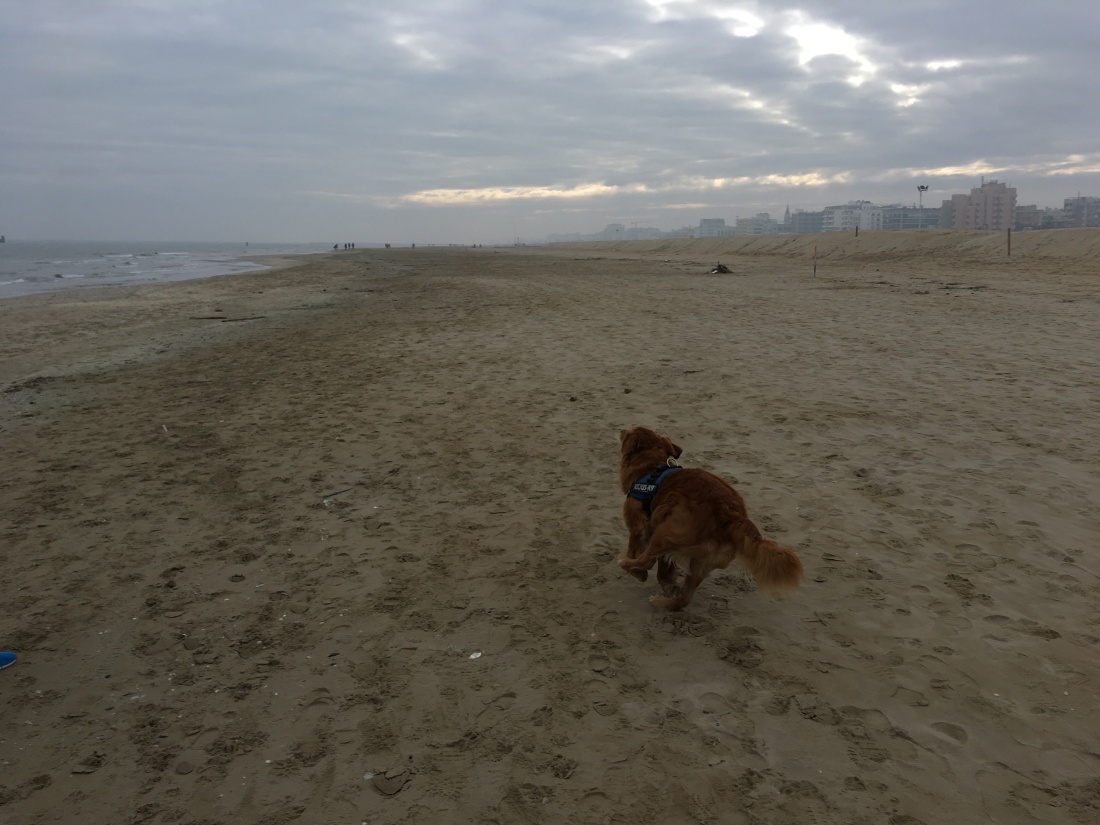
Given the choice, I would definitely chose the fresher air of San Marino, that curious little enclave, a quirk of history, still standing proud and independent on its craggy outcrop.
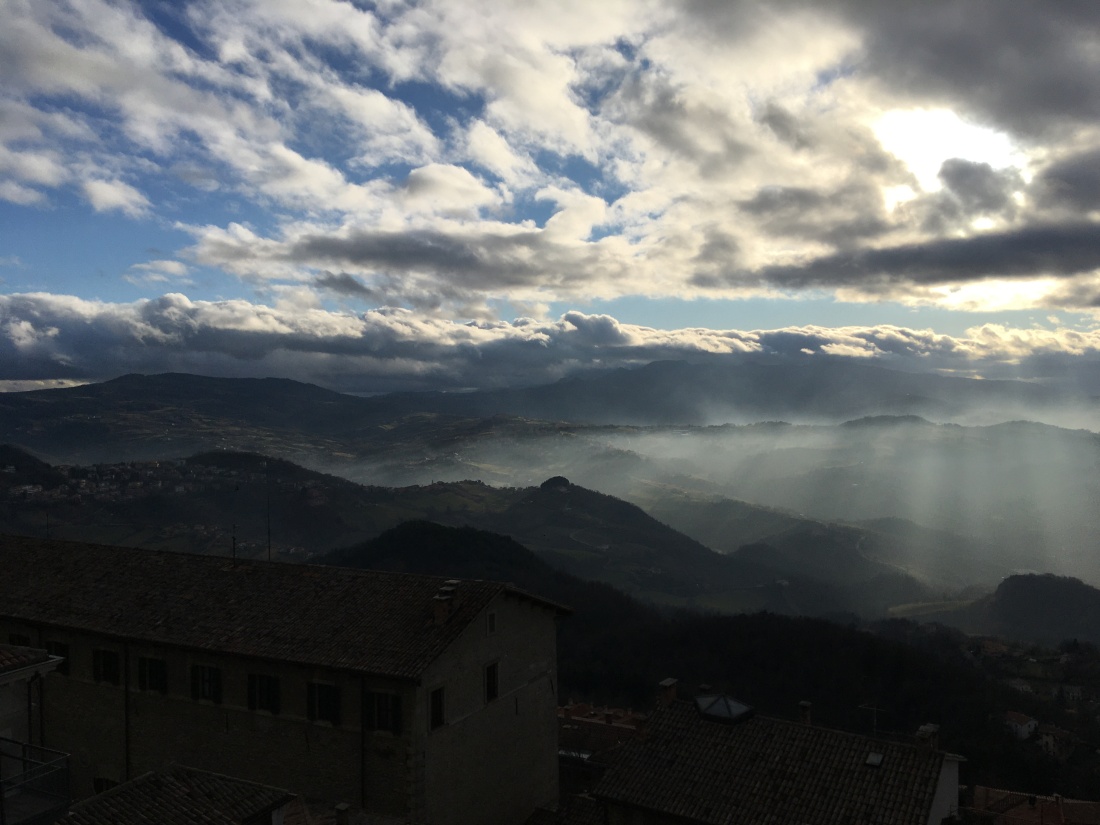
And well done if you have managed to read all of this article without getting the Flowerpot Men’s flowerpower hit stuck in your head.
I was here back in 2010, During a giro from Pisa across Toscana to La Marca Trevigiana
LikeLiked by 1 person